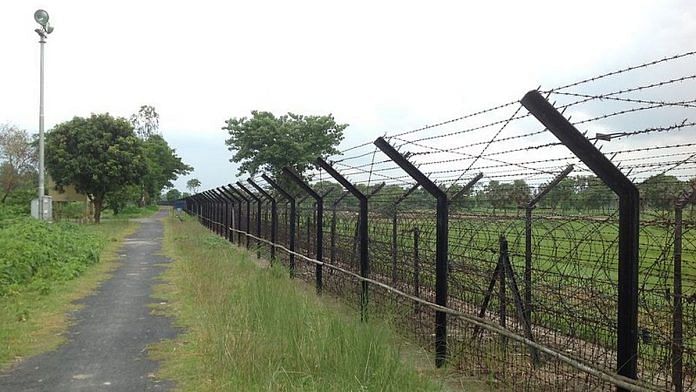Pilot project in Assam will replace physical security mechanism with a technical set up. It will be inaugurated by home minister Rajnath Singh next month.
New Delhi: Sonar cameras, radars, aerostats and electro-optic underground sensors are among the equipment the Home Ministry has put in place to secure a 60-km land and riverine border with Bangladesh in Assam’s Dhubri district, ThePrint has learnt.
The pilot project that falls under the comprehensive integrated border management system will completely replace physical security mechanism with a technical set up for enhanced security.
It will be inaugurated by Union Home Minister Rajnath Singh next month.
This stretch, which includes a riverine border across the Brahmaputra, was until now the most vulnerable to infiltration. The Border Security Force (BSF) was relying on CCTV surveillance to detect intrusion. However, a need was felt to further secure the border.
The border management division of the home ministry has also identified more vulnerable areas along 2,400-km long borders with both Pakistan and Bangladesh, where pilot projects will start in the next phase.
Also read: Bangladesh is better off than India, not a poor, backward neighbour anymore
Tapping technology
“The idea is to ensure a 24X7 security without any scope of error. The need of the hour is to secure our borders through the use of technology and develop a forward looking strategy,” a home ministry official said.
“Securing the borders physically will always have its limitations. So we decided to make the shift,” he added.
According to sources, the new equipment is already in place at the border and the pilot project will kick off as soon as it is inaugurated.
“The sonar cameras will work under water to detect any threat that might be approaching us from under the river. Similarly, the radars and the aerostats will keep a vigil in the area,” the MHA official said.
“We even have electro-optic sensors, as deep as 20 feet, which will keep a watch on any activity that might happen underground,” the official said.
The technology is so advanced that it can even detect the movement of a tiny fish and can be seen on the projectors in the control room, the official said.
“Same goes for aerostats and optic sensors. This sort of vigil and security was impossible with just physical deployment as the human eye has its limitations,” he added.
Also read: Why Modi govt & Army picked this general to protect borders with China & Pakistan
The sources said that the technology has been purchased from a European company after competitive tenders and experts have been called in to train BSF personnel to use it.
“The training has already begun and the BSF personnel are getting used to the technology,” the official said.
“Once it is inaugurated and the training is complete, the BSF personnel will also be able to train other staff in using that technology,” the official said.



